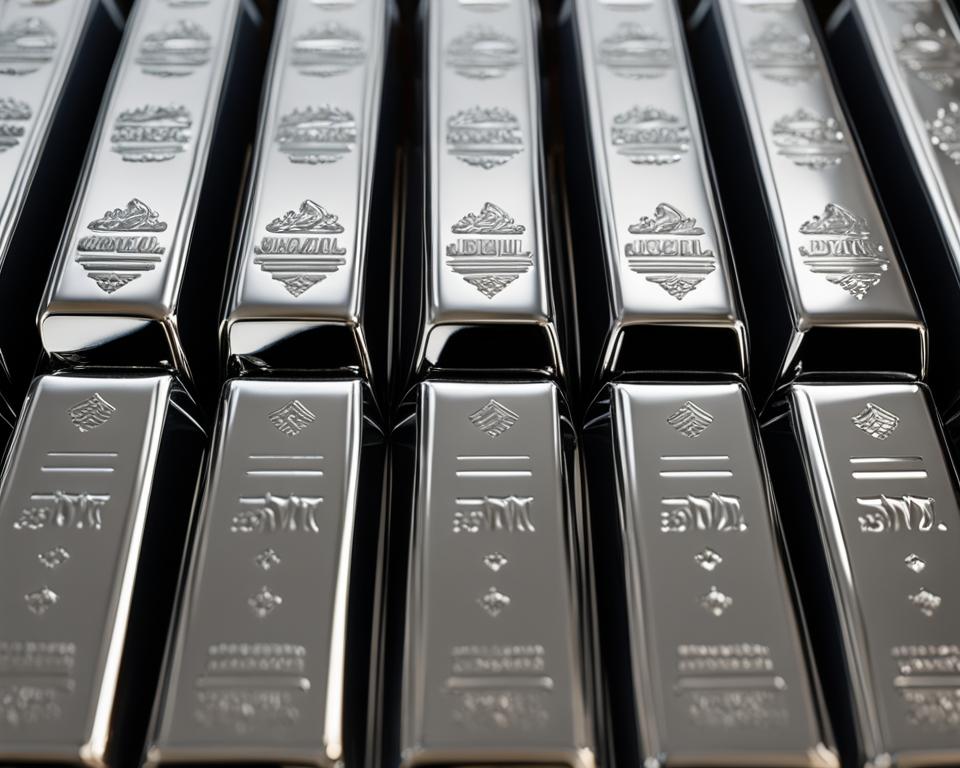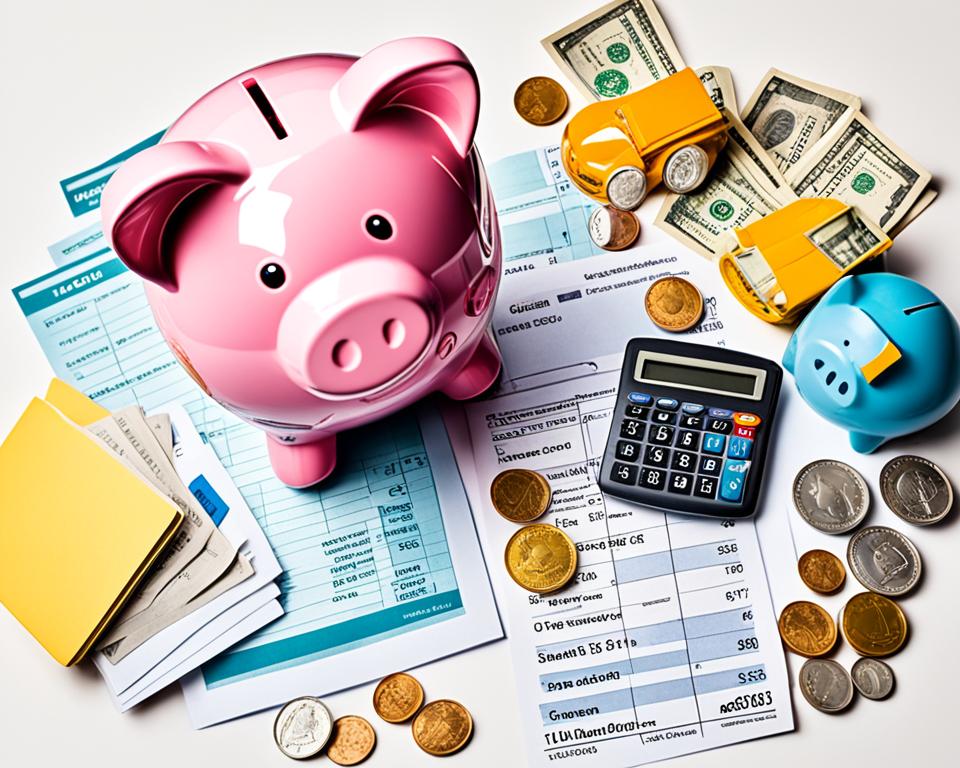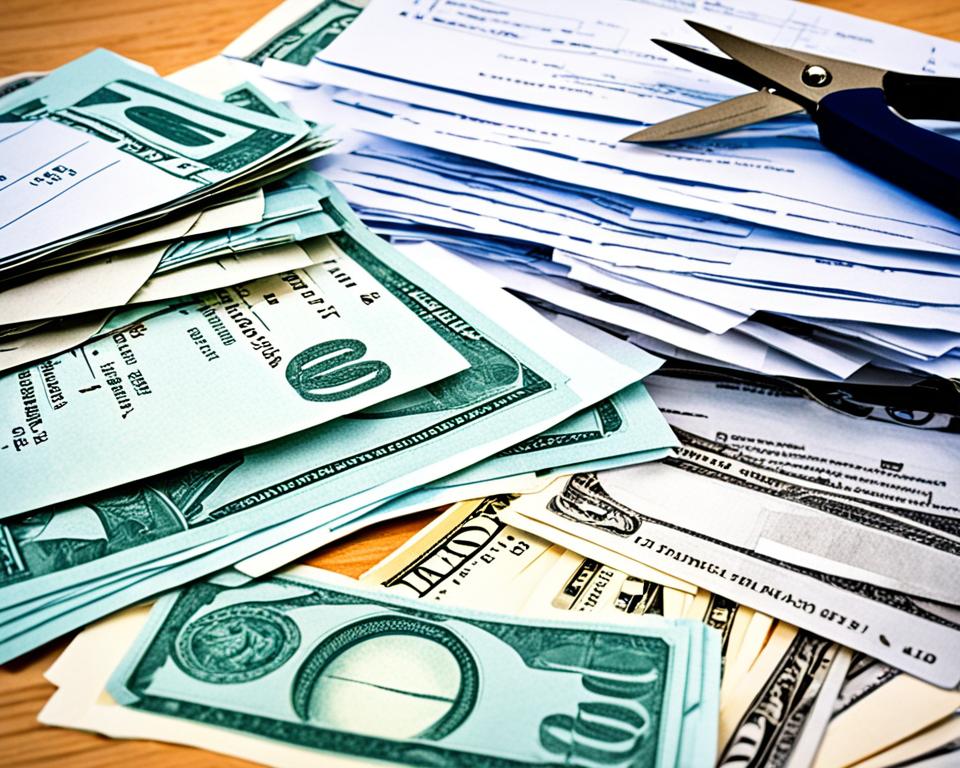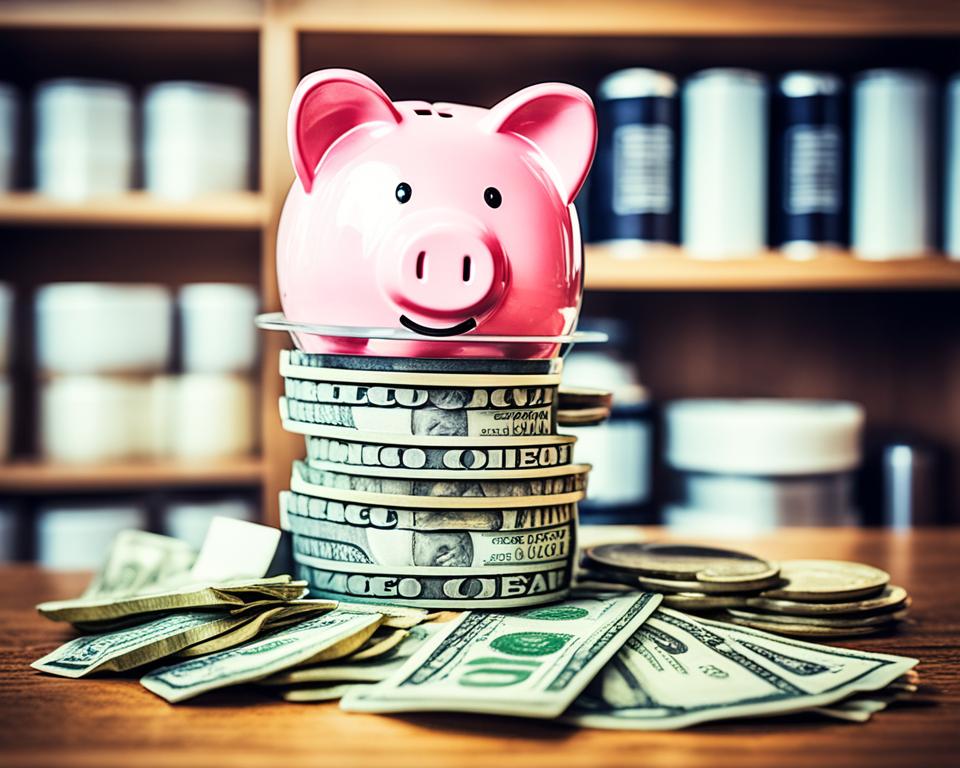Silver and gold are often seen as good investments that can serve as hedges against inflation and help diversify a portfolio. While silver has industrial uses and potential for long-term growth, it is also more volatile than gold and may not be suitable for those seeking risk-free investments or quick returns.
It is important to consider factors such as silver’s correlation to other assets and its scarcity when deciding whether to invest in it.
Key Takeaways:
- Investing in silver can help diversify your investment portfolio.
- Silver’s long-term growth potential and industrial uses make it an attractive investment option.
- Consider the volatility of silver when evaluating its suitability for your investment goals.
- Silver can act as a hedge against inflation and geopolitical risks.
- Scarcity and silver’s correlation to other assets should factor into your investment decision.
When is Silver a Smart Investment?
Silver is a smart investment option for long-term growth. Its potential stems not only from its value as a precious metal but also from its real-life uses in various industries. Silver is widely utilized in medical applications, solar panels, batteries, nuclear reactors, and touch screens. As the global commitment to green infrastructure and clean energy sources continues to grow, the demand for silver is anticipated to rise even higher. Additionally, the rapid development of electric vehicles presents an exciting opportunity for silver, as it is a critical component in their production.
Investing in silver requires patience and good timing. While the market can be volatile in the short term, those who hold on to their investments and weather the fluctuations are more likely to benefit from long-term growth. Silver also serves as a means of diversification, allowing investors to offset exposure to riskier assets. This diversification strategy helps to protect against economic turmoil, as silver has historically demonstrated its value during periods of financial instability.
Investing in silver provides you with the potential for long-term growth, exposure to silver’s real-life uses, and the opportunity to diversify your portfolio.
If you have the patience and ability to tolerate market volatility, investing in silver can be a wise decision. By taking advantage of silver’s growth potential and its value in economic turmoil, you can strengthen your portfolio and position yourself for long-term financial success.
| Silver’s Benefits as an Investment | Silver’s Value in Economic Turmoil |
|---|---|
|
|
By investing in silver, you not only secure a valuable asset but also position yourself strategically to mitigate risks and capture long-term gains. However, it’s crucial to remember that investing in silver requires careful consideration, patience, and the ability to withstand market fluctuations.
When is Silver Not a Wise Investment?
While silver can be a smart investment, it may not be suitable for everyone. It is not a risk-free investment, as its value can fluctuate significantly. If you are looking for quick returns or a steady income stream, silver may not be the best choice. Additionally, if easy liquidity is a priority, gold may be a better investment option. It is important to consider your investment goals and risk tolerance before deciding whether to invest in silver.
Investing in silver comes with a certain level of volatility. The price of silver can experience significant fluctuations, making it less suitable for investors seeking stable and predictable returns. Silver’s value is driven by various factors such as industrial demand, investor sentiment, and macroeconomic conditions, which can result in price swings.
Furthermore, if you are looking for a risk-free investment or one that offers quick and guaranteed returns, silver may not meet your expectations. While silver has the potential for long-term growth, it is important to have realistic expectations and understand that it may take time to see substantial returns on your investment.
Another consideration when evaluating silver as an investment is its lack of liquidity compared to other assets. While silver can be bought and sold relatively easily, it may not have the same level of liquidity as other financial instruments. This means that you may not be able to quickly convert your silver holdings into cash when needed.
It is important to consider your investment goals and risk tolerance before deciding whether to invest in silver.
In summary, while silver can be a valuable addition to an investment portfolio, it may not be the ideal choice for everyone. Silver’s volatility, lack of liquidity, and inability to provide risk-free and quick returns are important factors to consider. Before investing in silver, it is crucial to carefully assess your investment goals, risk tolerance, and overall financial strategy.
How to Invest in Silver
When it comes to investing in silver, there are several avenues you can explore to gain exposure to this precious metal. Whether you prefer physical assets, futures contracts, or investments in mining companies, there is a strategy that suits your investment goals and risk tolerance.
Purchasing Silver Coins and Bullion: One popular option is to buy physical silver coins and bullion. Not only does this allow you to own tangible assets, but it also offers the satisfaction of holding physical silver in your hands. However, it’s important to note that this option requires a storage solution to keep your investment safe.
Silver Futures: Another way to invest in silver is through silver futures contracts. By trading futures, you can speculate on the future price of silver without having to physically own the metal. This can be a more convenient option for active traders who prefer to take advantage of short-term price movements.
Investing in Silver Mining Companies: For those looking for indirect exposure to silver, investing in silver mining companies can be a viable option. These companies engage in the exploration, development, and production of silver, allowing you to benefit from the potential growth in the silver industry.
Silver ETFs: Exchange-traded funds (ETFs) are another popular way to invest in silver. Silver ETFs are designed to track the performance of silver prices and provide investors with a convenient way to gain exposure to the silver market. These assets can be bought and sold on stock exchanges, offering flexibility and liquidity.
Silver IRA: If you’re looking to use silver as part of your retirement savings strategy, you may consider opening a silver IRA. A silver IRA allows you to invest in physical silver or silver ETFs within a retirement account, providing potential tax advantages as you build your wealth for the future.
Silver Investment Methods Comparison:
| Investment Method | Advantages | Considerations |
|---|---|---|
| Purchasing Silver Coins and Bullion | – Tangible asset ownership – Satisfaction of physically holding silver |
– Requires storage solution – Limited liquidity |
| Silver Futures | – Opportunity for active trading – Speculation on future price movements |
– Requires futures market knowledge – High risk and volatility |
| Investing in Silver Mining Companies | – Indirect exposure to silver market growth – Potential for company-specific benefits |
– Company-specific risks – Volatility tied to mining industry |
| Silver ETFs | – Convenience and flexibility of trading – Instant diversification across silver market |
– Management fees – Not direct ownership of physical silver |
| Silver IRA | – Potential tax advantages within a retirement account – Long-term wealth accumulation |
– Limited investment options within the IRA – Possible IRA custodian fees |
It’s important to carefully consider your investment goals, risk tolerance, and preferences before choosing a method to invest in silver. Consulting with a financial advisor can help you make an informed decision and create a strategy tailored to your needs.

When to Consider Gold Investing or Other Precious Metals
While silver can be a good investment, there are times when gold or other precious metals may be more appropriate. Gold, in particular, offers certain advantages that make it a preferred choice for many investors.
Advantages of Gold Investment:
- Liquidity: Gold is often considered a more liquid asset compared to silver or other precious metals. It is readily bought and sold, making it easier to convert into cash when needed.
- Stable Investment: Gold has a reputation for being a stable investment, providing a sense of security during economic uncertainties. Its value tends to hold steady or even increase over time, making it an attractive option for long-term investors.
- Safe Haven Asset: Gold is commonly regarded as a safe haven asset, meaning it retains its value or even increases in times of economic turmoil or market volatility. Investors often turn to gold as a way to protect their wealth and hedge against potential risks.
When considering investing in precious metals, it is important to evaluate the specific characteristics and advantages of each metal in relation to your investment goals. While silver may have its benefits, gold’s liquidity, stable nature, and safe haven status make it a compelling option for those seeking a reliable and secure investment.
| Silver | Gold | |
|---|---|---|
| Liquidity | Less liquid compared to gold | Considered more liquid |
| Stability | More volatile than gold | Known for stable long-term value |
| Hedge against Risk | Offers some protection, but may be riskier | Classic safe haven asset |
Note: The table above provides a comparison between silver and gold in terms of liquidity, stability, and their ability to serve as a hedge against risk. It further highlights the advantages that gold possesses in these areas.
Why Should I Buy Silver for My Portfolio?
Buying silver for your portfolio can provide several benefits. Silver is a valuable asset that has proven to deliver significant value for investors over time. It can serve as a hedge against risk, protecting your wealth during economic downturns, inflationary periods, and geopolitical uncertainties. Silver may also offer opportunities for short-term profit, especially when the market is undervaluing it. Additionally, investing in silver allows you to diversify your portfolio and mitigate the risks associated with overvalued markets and systemic issues in the financial system.
Silver is a valuable asset that has been sought after for centuries. It is not only a precious metal, but it also has practical uses in various industries such as electronics, jewelry, and renewable energy. Its versatility and scarcity contribute to its enduring value and appeal as an investment.
One of the key reasons to buy silver for your portfolio is as a hedge against risk. In times of economic uncertainty or market volatility, silver tends to perform well. It has a historical track record of protecting wealth during periods of inflation, currency risk, and geopolitical instability. By including silver in your portfolio, you can safeguard your investments and potentially reduce overall risk.
Inflation and currency risk are major concerns for investors. The value of paper currency can be eroded by inflation, diminishing purchasing power. Silver, on the other hand, has inherent value and can act as a safeguard against inflationary pressures. Its value tends to rise in response to inflation, providing a potential buffer against currency depreciation.
Geopolitical risk is another factor to consider when investing. Global events such as political instability, trade disputes, and natural disasters can have a significant impact on financial markets. Silver has historically demonstrated resilience during such periods, making it an attractive investment option for those seeking stability and security.
In today’s financial landscape, overvalued markets and systemic risks are a concern for many investors. Buying silver can help diversify your portfolio and reduce exposure to overvalued assets. It provides an alternative investment that is not directly correlated with traditional markets, offering potential protection against market downturns and systemic issues.
While long-term growth is often the focus of investment strategies, silver also presents opportunities for short-term profit. When silver is undervalued, investors can capitalize on market inefficiencies and potentially benefit from price increases. Timing the market is challenging, but diligent research and analysis can uncover potential buying opportunities when silver is perceived to be below its intrinsic value.
To summarize, adding silver to your portfolio can be a wise decision. It is a valuable asset that hedges against various risks such as inflation, currency fluctuations, and geopolitical uncertainties. It also provides opportunities for short-term profit and diversification in overvalued markets. Considering these factors, investing in silver can contribute to the long-term stability and growth of your portfolio.
What Makes Silver Such a Great Investment?
Silver has several characteristics that make it a great investment option. Firstly, scarcity is a significant factor that contributes to its value. Unlike other commodities, above-ground quantities of silver are declining over time, making it a finite resource. This scarcity creates a sense of urgency and potential for higher prices in the future.
“Silver is the investment opportunity of a lifetime”
In addition to scarcity, silver offers the potential for larger gains compared to gold, particularly during bullish markets for precious metals. The gold-silver ratio, which measures the relative value of gold and silver, is currently at a record high. This indicates that silver is undervalued and has the potential for significant future gains when the ratio inevitably rebalances.
“Now is the time to take advantage of the undervalued silver market”
Unlike gold, silver also has a low risk of confiscation by governments during economic crises. This low risk makes silver an attractive investment, especially for those concerned about political and economic uncertainties. Investing in silver provides a sense of security and peace of mind, knowing that your investment is less susceptible to government intervention.
“Protect your wealth with silver – a safe haven investment”
To summarize the reasons why silver is a great investment:
- Scarce resource with declining quantities
- Potential for larger gains compared to gold
- Low risk of confiscation during economic crises
| Investment Characteristics | Silver | Gold |
|---|---|---|
| Scarcity | ✓ | ✓ |
| Potential for Larger Gains | ✓ | ✓ |
| Low Risk of Confiscation | ✓ | ✗ |
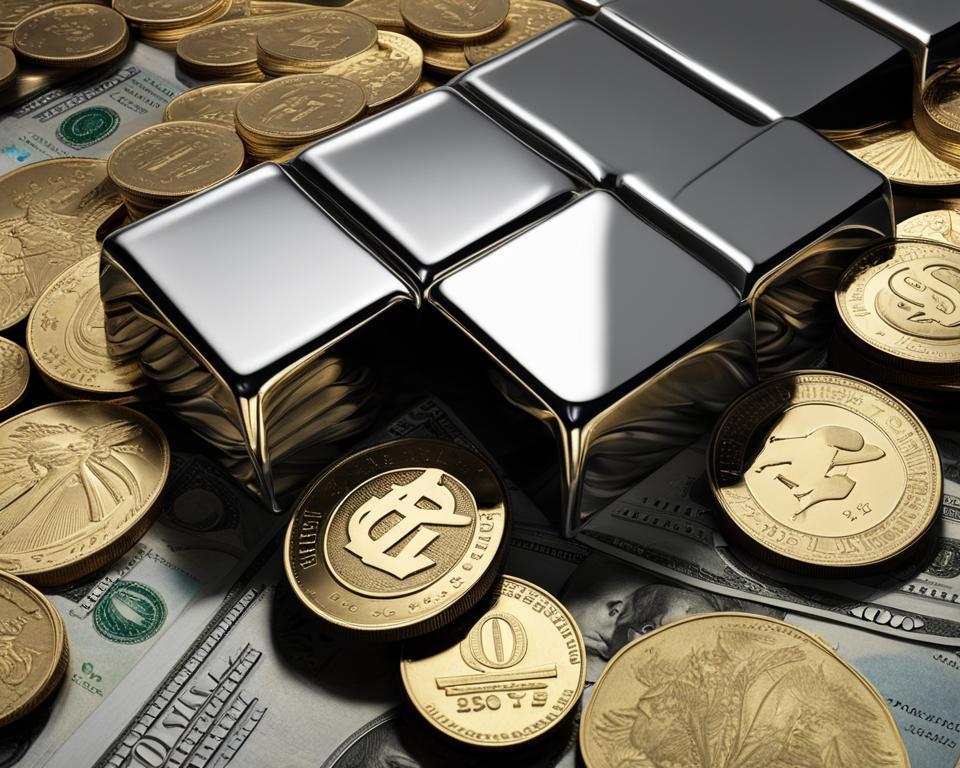
Why Should I Buy Silver Now?
The current geopolitical landscape and systemic risks in the global financial system make buying silver a wise decision. Geopolitical risks, such as trade wars and political instability, can lead to economic uncertainties that may drive up the demand for silver. Systemic risks, including excessive debt and risky financial products, further highlight the importance of investing in assets like silver that have inherent value. As market volatility increases and the possibility of another market correction looms, silver provides a potential hedge and investment opportunity to protect and grow your wealth.
Ways to Invest in Silver
When it comes to investing in silver, there are several options available based on your preferences and investment goals. Each investment option has its own advantages and considerations that are important to evaluate.
1. Physical Metals:
Investing in physical metals, such as silver bars and coins, offers the advantage of owning tangible assets. This can provide a sense of security and control over your investment. Additionally, physical silver can be collected and displayed, making it an appealing option for collectors.
2. Silver ETFs:
Silver ETFs (Exchange-Traded Funds) provide an opportunity to invest in silver without handling physical metal. These funds are traded like stocks on exchanges, making them easily accessible and offering liquidity. This can be a convenient option for investors who prefer a more flexible and diversified approach.
3. Mining Stocks and Funds:
Investing in mining stocks and funds can provide exposure to the silver market through companies involved in silver production. This option allows you to benefit from the potential growth in the silver industry and the expertise of mining companies. However, it is important to note that mining stocks and funds can be influenced by factors beyond the price of silver, such as operational issues and economic conditions.
Before making a decision, consider your risk tolerance, investment horizon, and the level of involvement you desire. It is always wise to research and seek advice from financial professionals before investing.
Here’s a glimpse into how these investment options differ:
| Investment Option | Advantages | Considerations |
|---|---|---|
| Physical Metals |
|
|
| Silver ETFs |
|
|
| Mining Stocks and Funds |
|
|
In summary, when investing in silver, you have the option to choose physical metals, silver ETFs, or mining stocks and funds. Each option comes with its own set of advantages and considerations. It’s crucial to evaluate these options based on your investment goals, risk tolerance, and personal preferences. Remember to assess the market conditions and consult with financial professionals before making any investment decisions.
Conclusion
Investing in silver can provide a valuable opportunity for portfolio diversification and long-term financial security. By including silver in your investment strategy, you can take advantage of the various silver investment opportunities available in the market. Silver offers the potential for steady growth and acts as a hedge against inflation and geopolitical risks.
Understanding the unique characteristics of silver as an investment asset is crucial in making informed decisions. Consider your own investment goals and risk tolerance when determining the appropriate allocation for silver in your portfolio. Remember, seeking guidance from a financial advisor can help ensure that your investment strategy aligns with your long-term financial security goals.
With its historical significance and increasing demand in various industries, silver holds promising potential for investors. It serves as a valuable addition to a well-diversified portfolio, providing stability and the potential for long-term wealth accumulation. Harness the power of silver investment opportunities to secure your financial future.
FAQ
Is investing in silver a good investment?
Yes, investing in silver can be a good investment. Silver is often seen as a hedge against inflation and can help diversify a portfolio. It has real-life uses and potential for long-term growth.
When is silver a smart investment?
Silver is a smart investment option for those seeking long-term growth. It has a range of real-life uses, including in medical applications, solar panels, batteries, nuclear reactors, and touch screens. The growing commitment to green infrastructure and clean energy sources is expected to drive the demand for silver even higher.
When is silver not a wise investment?
Silver may not be suitable for those seeking risk-free investments or quick returns. It is also more volatile than gold and may not be the best choice if easy liquidity is a priority.
How can I invest in silver?
There are several ways to invest in silver. One option is to purchase silver coins and bullion, but this requires a storage solution. Another option is to invest in silver futures, which allow you to bet on or against the future value of silver. Investing in silver mining companies or silver ETFs are additional options for gaining exposure to the silver market. You can also consider opening a silver IRA.
When should I consider gold investing or other precious metals?
Gold is often considered a more liquid asset and can be easily bought or sold. It is also perceived as a stable investment and a safe haven asset, making it a popular choice during times of economic uncertainty.
Why should I buy silver for my portfolio?
Buying silver for your portfolio can provide several benefits. It can serve as a hedge against risk, protecting your wealth during economic downturns, inflationary periods, and geopolitical uncertainties. Silver may also offer opportunities for short-term profit, especially when the market is undervaluing it.
What makes silver such a great investment?
Silver has several characteristics that make it a great investment option. It is a scarce resource, with the above-ground quantities declining over time. Silver has the potential for larger gains compared to gold, especially during bullish markets for precious metals. The gold-silver ratio is currently at a record high, indicating that silver is undervalued and has the potential for significant future gains.
Why should I buy silver now?
The current geopolitical landscape and systemic risks in the global financial system make buying silver a wise decision. Geopolitical risks, such as trade wars and political instability, can lead to economic uncertainties that may drive up the demand for silver. Systemic risks, including excessive debt and risky financial products, further highlight the importance of investing in assets like silver that have inherent value.
What are the ways to invest in silver?
There are different ways to invest in silver based on your preferences and investment goals. Physical metals, such as silver bars and coins, offer the advantage of owning tangible assets. Silver ETFs provide an opportunity to invest in silver without handling physical metal, and they are traded like stocks on exchanges. Investing in mining stocks and funds can also provide exposure to the silver market through companies involved in silver production.
What are the benefits of investing in silver?
Investing in silver can be a valuable addition to your investment portfolio. It offers opportunities for diversification, protection against inflation and geopolitical risks, and the potential for long-term growth.

